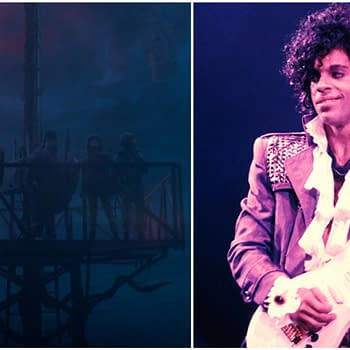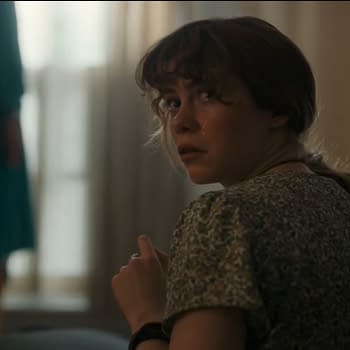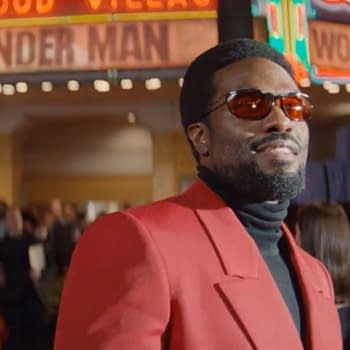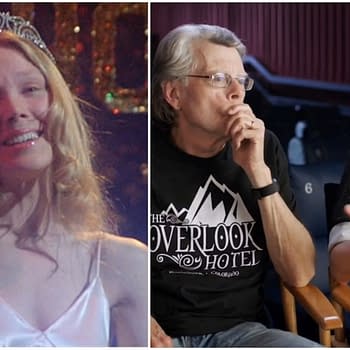Posted in: Exclusive, Interview, Marvel Studios, Movies | Tagged: deadpool, deadpool & wolverine, exclusive, interview, kevin feige, marvel, Shane Reid, shawn levy, wolverine
Deadpool & Wolverine Editor on Variants Sequence, Levy, Feige & More
Editor Shane Reid (Ghostbusters: Frozen Empire) spoke to Bleeding Cool about Marvel's Deadpool & Wolverine, Shawn Levy, fights and more
Article Summary
- Shane Reid discusses his transition from Ghostbusters to editing Deadpool & Wolverine in the MCU.
- Reid shares insights on collaborating with director Shawn Levy and actor Ryan Reynolds.
- The Wolverine variants sequence expanded during the actors' strike, adding depth and humor.
- Reid describes the intense challenges of editing key action scenes, notably the final battle.
Editor Shane Reid had a Herculean task of tackling his second major franchise after primarily building his filmography from shorts, music videos, and a documentary. After landing Sony's Ghostbusters: Frozen Empire, the fifth of the franchise, which was released in 2024, his next challenge was Deadpool & Wolverine, marking the Marvel Cinematic Universe debut for both characters having built their legacy from 20th Century Fox before the Disney buyout. Luckily, after a mutual connection landed him with director Shawn Levy, he had a solid foundation to work from and build into the highest domestic-grossing R-rated film you see today. The film marks the third film of the Ryan Reynolds-starred franchise that sees him reunite with his X-Men Origins: Wolverine (2009) co-star Hugh Jackman reprising his role as Logan/Wolverine, mostly as his "worst" variant not to upend the canon from 2017's Logan. Reid spoke to Bleeding Cool about how he got involved in the Marvel Studios film, how it compares to his previous work, Levy's creative flexibility, Deadpool's search for variants, deleted scenes, and the epic car fight. The following contains spoilers.
Deadpool & Wolverine follows Wade/Deadpool as he finds himself retired from being a superhero after a couple of major rejections and coping with depression trying to find purpose in his life when the Time Variance Authority pulls him to inform him to recruit him while killing off his world due the anchor being Logan dying. Trying to save his universe, Wade scours the multiverse only to find the "worst" Wolverine.
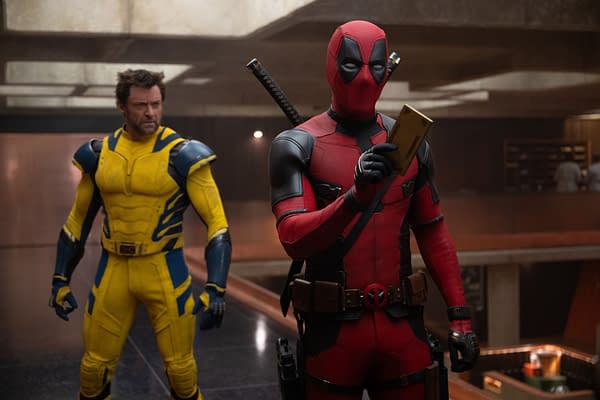
Deadpool & Wolverine Editor Shane Reid on Smooth Production & Zaniness of MCU Film
BlC: How did you get involved with Deadpool & Wolverine?
SR: I've been an editor for a long time but mainly came from short-form work, and I was quite fortunate to cross paths with Blake Lively. I edited a music video for Taylor Swift, which Blake directed, and we became fast friends and collaborators. She and Ryan are involved in everything creatively he does. They work in tandem and through that process, I got to know Ryan. When he announced Deadpool & Wolverine, I asked them if they had a place for me in the film, I would love to be a part of it. They had enough faith in me to push me up to editing with them and bring me on board.
How does a film of this nature compare to your previous work?
I did a documentary in 2016 called One More Time with Feeling, which was the only other long-form thing I cut, and then I got Ghostbusters: Frozen Empire right before Deadpool. I was in tandem doing Ghostbusters and Deadpool. Ghostbusters was a great way to introduce me to wrangling something that felt like it was made for a giant screen for a big audience. The other stuff I've done felt more for an intimate audience. This experience was, "How do you take these concepts, edits, and ideas you have about the film, and then imagine them playing in front of thousands of people at a time?"
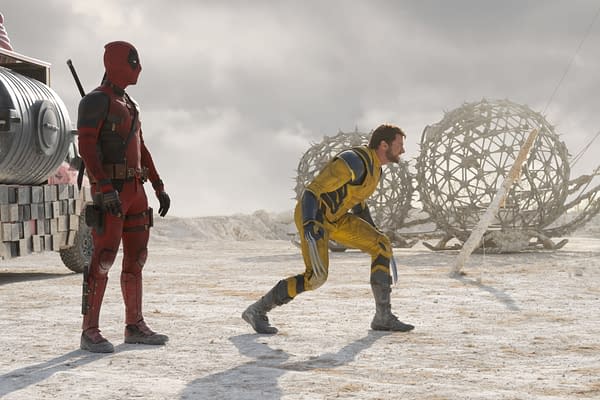
What's been the process like working with Shawn Levy and what he wanted to accomplish for the film?
Shawn Levy is a wonderful director and collaborator. I was fortunate to cross paths with him at this time. He is a smart, sharp director who also acts from the place of an audience member. He knows what he wants and is receptive to ideas. We worked well in that way and his longtime collaborator Dean Zimmerman, the other film editor. They've been working together for a long time and they have shorthand with each other. I had to come in and be an alternative voice in the room, but it meshed well because we all had different ideas. Shawn is so secure, and smart and knows what he wants that he'll take those ideas on and filter out the ones he feels are improving the film and ridding the ones that don't.
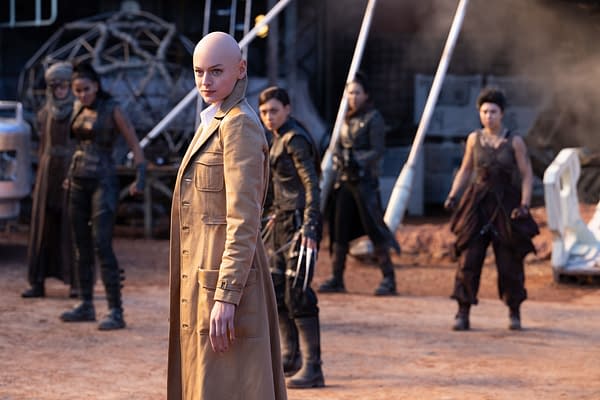
One of the sequences that intrigued me was the Wolverine variants. How was it organized and were more planned or alternate takes of how Deadpool met them?
Originally, it was a much shorter sequence. They scripted and shot the mini-Wolverine, which I believe was always set to be the discovery. It was the sort of rug pull of thinking it's Hugh Jackman and then revealing the comic-accurate short king. Then they shot 'Patch,' 'Apocalyptic Wolverine,' and 'Cavillrine' (Henry Cavill). It was originally only a few, and they weren't scenes, but they were meant to be more linear like you would go into this place. You'd go in through a time door and meet Patch, and then [Deadpool] would come down and say something to Patch and Patch would kill him.
You go out to another time door. When we first put that together, Dean and I recognized early on that there was more fun to be had there, but we were moving and everything was going quickly. Then the actors' strike happened, and we shut down. At that point, we had a good third of the film shot so we had to cut and finesse the beginning of the film, but we already had those Wolverine variants shot. Dean and I went to Shawn and Ryan. You can't get this kind of thing done unless you have guys like Shawn and Ryan who are creative partners in your corner, listen and understand that you have a vision, recognize it, and go with it. We pitched them a much more fun sequence here, but we need at least three or four more Wolverines.
So, during the strike, we got together with the storyboard artist who pitched us ten different deep-cut Wolverine variants, and we had the time to mess around with the edit. We wove in what already exists and then storyboards. We would record dialog over it. I already brought in the Huey Lewis and the News track, so we had a tone for it. We built that sequence out and then because we had done our due diligence with our material, we also realized there were a few things we didn't need we planned to shoot. Shawn was able to pull those things out of the second round of production and fold the Wolverine variants in. Our producers, Mary McLaglen, Wendy Jacobson, and Josh McLaglen were supportive in helping us budgetary, build some more Wolverine costumes, and build some different sets, and understood we were on to something. That's how that came to be.

What was the most difficult sequence to cut together? Were there any scenes you begrudgingly had to cut?
To answer the first question, the most difficult sequence. "Difficult" is a hard way to describe it, because sometimes when you're making a film and you are up against a challenge that can be "difficult," there's an opportunity, it takes hard work, brainpower, and imagination to accomplish it. The sequence that would fit the most is the final power room sequence between Deadpool, Wolverine, and Cassandra (Emma Corrin).
It was scripted and shot to be, "These are the stakes. The world is going to explode. Cassandra's destroying this timeline. Deadpool and Wolverine are going to come in." Deadpool is going to reach one side and there was an idea and a joke we think Deadpool, as an audience, was about to make the connection. Then we were going to pull the camera back and stop the music, and the joke was he was too far away from where he needed to be. The way the set was built wasn't a way to accomplish that.
In the script, Wolverine comes in and connects to his buddy, pops his claws, and makes that final connection. We felt like putting it together if you're coming out of the tone of the hallway and tunnel with them. You have this sweet moment with Deadpool and Wolverine, finally connecting and becoming brothers. It felt like we wanted to carry on that feeling. We wanted more power there. That sequence worked, but it felt thin, and when we put it together, it felt like the accumulation of the rest of the film didn't hit the crescendo it needed to.
That took us going, "What other ideas can we throw here? Are we going to see the world disintegrating like a Marvel film? Are we going to see people evaporating into ash [like in 'Avengers: Infinity War' (2018)]?" It wasn't the tone we wanted. We wanted it to feel different than some of the other Marvel rules. I remember putting it together at the time thinking we needed to go more internal with Deadpool and we needed to extract something from him. The reason we feel for him dying in this moment so we had the other films to work off little bits to pull out from the first two 'Deadpool' films.
We constructed something beautiful using plates and seeing Wade's world start to disappear, but the challenge was then we needed to do the same thing with Wolverine, and we didn't have we couldn't pull from that same material because we're using a different Logan than other Logans. Then it became about digging back through the film and finding anything that had not made the edit we could use in a way to sort of get inside of Wolverine's mind, and soul, and pull them together.
At the same time, [Marvel Studios president] Kevin Feige in a last minute, ditch effort, and visual effects throughout the idea of the spaghetti coming out and Cassandra melting the timeline that had been from 'Loki' and we hadn't been going down that road. Suddenly, that was a new variable and so this is why I say, "You could classify that as difficult, but it was incredible, too." It took a lot of new ideas, rewriting, and working together as a team with Shawn, Ryan, Dean, and myself in the visual effects department to make that sequence as powerful as it was.
Your second question about something hitting the cutting room floor. There's not a lot there. Shawn's a deliberate filmmaker. We were moving fast, and you were already up against it with a tight production window and post window I would say almost everything is there. Some choices and things went, but nothing difficult. Nothing we felt we held on to for too long when it was little things like the campfire scene with Wolverine and Laura (Dafne Keen) is such a beautiful scene.
Originally, Deadpool interrupted it with some jokes about Blade (Wesley Snipes) wanting a s'more, cutting the tension. That's the thing you feel like when you're writing it, like, "Okay, we're getting very serious in a Deadpool way. Let's cut this tension with some comedy." It took about two audience previews to go, "Maybe we need to get rid of Deadpool, and we need to let Logan have this moment." There were choices like that, but there wasn't anything painful for us to lose.
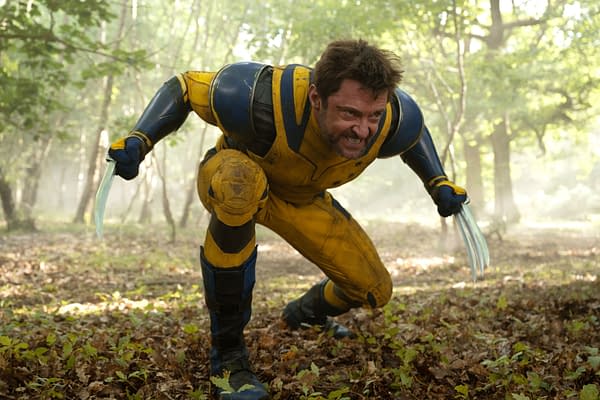
One of the best sequences in the film was the Deadpool-Wolverine car fight scene. That's wonderfully done.
I can tell you a few things about the scene that might make you happy. Alex Kyshkovych is our stunt coordinator, and within an inch of his life, he did all the choreography of that fight, which was amazing. Dean cut that sequence and did a wonderful job. I can't say where the music came from, either Sean or Ryan. It was one of their drops, but Ryan also had one of my favorite details in that sequence, which he wanted to push more of the bloodbath within the car. He had this idea to drip blood on Wolverine's face and teeth as he was laughing and smiling. That was one of the coolest parts of that scene; it's so maniacal and crazy. I'm with you. I love that scene, too.
Deadpool & Wolverine, which also stars Matthew Macfadyen, Morena Baccarin, Rob Delaney, Brianna Hildebrand, Shioli Kutsuna, and Leslie Uggams, is in theaters.









![Stranger Things: Lingering Questions Following the Finale [SPOILERS]](https://mlpnk72yciwc.i.optimole.com/cqhiHLc.IIZS~2ef73/w:350/h:350/q:75/rt:fill/g:ce/https://bleedingcool.com/wp-content/uploads/2026/01/StrangerThings_S5_0728_R.jpg)
